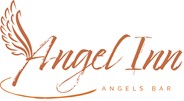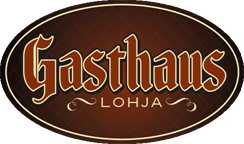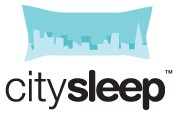Most hotel operators struggle to find effective ways to stimulate reservations when room occupancy is falling. Typically, during a low demand period or as you head in to an off-peak season.
While reducing your rates is a common knee jerk reaction, true it can sell a few more room nights, but as a strategy it does not necessarily create extra demand; it may just temporarily shift price-sensitive business.
Managing pricing by adding value
Changing your pricing has longer term consequences, that take effort and resources to address. A reduced turnover, a shift in customers’ value perception, the response of your competitor set and the impact on your pricing integrity, leading to resistance in any rate increases when markets or conditions do improve.
A more sustainable option is to focus on how you package your rate offering, by adding value and by increasing your marketing footprint.
Your marketing footprint can be extended by exploring different customer segments to sell to, going back to basics and re-looking at your property’s market positioning, and assessing the various customer touch points for any gaps or weaknesses.
You can add value to your product offering through a focus on quality, improving your marketing approach, work on driving up the guest satisfaction levels, and trying to capture and share the excitement, images, and feedback of your guests.
A higher perceived product value lowers the resistance of shoppers to buy more expensive items, if that product is perceived to have a good value for money offering. The same can be said for hotels where a guest will look at a number of factors when they are deciding where to stay and the value for money.
Each customer has different motives on why they buy, experience expectations, what their needs are and a level of willingness to pay at a particular price point for different products.
It’s always going to be more cost effective to sell to existing customers that it is to have to go out and acquire new ones.
Time, cost and effort are invested to find, select, approach and then nurture prospective new customers – while if you invest a little more effort into raising the satisfaction of your in-house guests and engage in relationship building with them it will provide a far better return on your efforts.
It can cost five times more to attract a new customer than it does to keep an old one.
Building loyalty takes time
But, once built, loyalty will make your customers trust you and your product. Once you have the trust of your customers it gives you a chance to explore other opportunities for sales growth and to also protect your investment as customers become less price sensitive and more emotionally tied to your property.
To understand more about what you customers want, you need to have a direct relationship with them, and for many properties their relationship with OTAs (Online Travel Agents) prevents them from knowing or having access to the full guest story. OTAs are very protective about the information that they have on your guests, the insights on buying behaviour, preferences and booking history.
OTAs are for a lot of hotel operators the heart of their online distribution, their huge marketing budgets enable them to reach a much broader audience, at home and in international markets that typically would be out of reach for many independent hoteliers. Guests are often more willing to book a destination that they have not been to before through an OTA because it provides a layer of comfort.
OTAs need to be thought of as a part of your distribution mix rather than as the only engine that drives online sales. Most operators would initially see them as a “tap” to turn on when business is slow – to increase the flow of reservations. But this needs to be managed carefully, as a trickle can become a torrent if operators don’t take the time to keep on top of demand and booking patterns, so that you do not dilute the potential impact of your own direct bookings which provides a higher profit margin.
If you have arrivals via an OTA booking, take the time to invest in converting these guests to book direct. For example, offer them a special rate code allowing them to book direct at a discount for their next trip.
We know in terms of the channels that prospective guests use to research a stay, they may start with an OTA website, but will probably include a visit to checkout your hotel's website to get more local information and a feel for the property and its surroundings.
With a prospective customer visiting your website, this is your opportunity to keep the visitor on your site and make sure you are set up for conversion for these lookers with an integrated direct booking engine, before they return to the OTA site and become bookers.
You need a plan on how to get the looker to shift booking channels. To make an impact you need to ensure that your property is being represented in a professional way with hi-res images, easy to understand room types and features and local information that adds value to the content a visitor can read about you compared to what they find on an OTA site.
Tracking your occupancy trends to set prices
Firstly, you need to be able to identify your hotel’s historical and forecasted occupancy trends, matched with the booking behaviour of your guests – for example how they booked, which channel they used, how long in advance did they book, etc.
A review of your hotel’s annual occupancy forecast will provide insights into soft periods that need help, it should be no surprise for example that particular dates every year need help i.e. December 25th. With other public holidays local to your market, make sure to check the dates going forward as they may be subject to change.
When you are planning how to address low demand periods, it is key to know the typical booking behaviour of your guests. Do they book months in advance or last minute?
Having a handle on their behaviour allows you to plan your activities in time, rather than missing out on opportunities because you are too late in the market and the booking window has closed.
There are companies that offer hotel benchmarking, aggregating booking data so you cannot see who the individual hotels are but it does give another layer of business intelligence to help you forecast what demand conditions could be like.
Below we have listed four activities to stimulate reservations when you experience low demand periods:
1. SEO (Search Engine Optimization)
Effective SEO is important to raise the visibility of your hotel online for search. SEO allows your hotel to improve in search engine rankings and ultimately rank higher up in the SERPs (search engine results pages) and positively impacts the visitor traffic you receive.
Operators are keen to aspire for page 1, top ten ranking because it impacts the level of traffic you receive. Higher ranking implies you are ahead of your competitors, establishes a level of credibility and authority and increases brand awareness by reaching a wider audience.
By implementing an effective SEO strategy, you can increase your search engine ranking and optimise visibility.
Your SEO strategy should be regularly assessed and analysed, to check your performance:
• Do you have a keyword strategy?
• Have you checked your on-site optimization?
• Have you mapped out the flow a website visitor would take when on the site?
• Do you have a content marketing strategy?
• Have you checked the backlinks from other websites to your website?
• Do you regularly check google analytics?
2. Your online presence – a digital shop window
Capture the interest of customers early in their search behaviour rather than by competing with OTAs at the booking stage by creating unique content on your website around local attractions, events, service, etc.
In terms of the user experience, when a visitor lands on your site the fewer types of rates you have on display, the better. This makes comparing different offers to each other easier, so your customers can see that they are getting the best deal by booking direct – use text such as “best price guarantees and savings” to get the offers to stand out.
Elevate the reasons to book direct, make sure that they are visible on your website and that the site is responsive to deal with visitors using mobile. Mobile is a critical touch point with prospective customers because it’s often the first touch point.
Guests do the majority of their research on mobile but are more likely to make their booking on desktop – so have technology in place that provides a seamless customer interface for a positive experience, no matter the device.
Use your social media skills to reach out and engage with your target audience, build your unique personality, brand awareness and start a conversation with your followers rather than it becoming one-way communication.
When it comes to online communication you should segment the emails in your database to customise your packages and offers.
Create some insights based on the business intelligence that you can gather, look at developing a conference and meetings package, or stay two nights and get the second one at a discount, offer dining discounts if they eat at your property, etc.
It makes sense to also have a look at segmenting the reason for travel, so if for example you had a corporate account staying with you that had an “autumn kick-off” session – there is no harm in reminding that customer that you have some new features, great rates and an even better guest experience awaiting them when they come back again.
3. Guest satisfaction
Arguably one of the most effective ways to build rapport with customers is to focus on guest satisfaction – something only you can do whilst the guest is at the property.
The guest experience has quickly become a battleground in the fight for long-term customer loyalty. Operators have had to review and assess how to put the customer first, making their wants, needs, and expectations at the core of how they manage and communicate with guests.
After one bad experience, 71% of adults say they would likely never use that brand again according to a Lithium survey.
There is always a risk that an unhappy customer can share their opinion and negatively impact your property through a post on social media, review travel sites, OTA sites, etc.
Creating a customer-focused culture is a business development opportunity that should not be overlooked. Some operators fail when it comes to the customer experience, they have forgotten what it is like to “walk in their customers shoes” or have any level of interaction with them, to take the chance to listen to their needs.
While collecting and collating guest feedback can be challenging, it does help to determine priority areas for improvement in your property and allow you to address quickly any customer services issues.
Often the fact that you deal swiftly with a customer issue, listen and address any problems can actually build loyalty. Ignoring a problem does not mean it goes away.
By providing your guests the chance to book direct it offers an opportunity to build a database, to start compiling business intelligence, track their behaviour and be in a position to take direct contact if an issue comes up.
4. Technology – booking direct
Today, particularly because of technology and the growth of online channels, there is added pressure on hotel operators to keep pace with the latest rate changes and not leave rooms unsold.
By developing a distribution mix that has direct booking tools, it means operators can leverage booking technology and provide visitors with an outstanding online user experience.
Shifting more of your room nights away from OTAs to get guests to book direct means less sales commissions to pay and the opportunity to build a direct relationship with your guests.
Happybooking is a user-friendly and affordable PMS. Used by hostels, independent hotels and larger hotels chains to handle daily operations easily, to gain control over your bookings and manage the day-to-day admin for even the busiest hotel manager.
All you need is an internet browser and you are ready to go to increase commission-free hotel bookings with a seamless, simple online booking experience that attracts and converts guests.
Happybooking has fully integrated modules and provides features that support you no matter the size of business, with automated payment solutions, custom integrations to POS (Point of Sale) systems, seamless channel management integrations with access to +100 booking channels including GDS connectivity and much more.
Take Away
If you have revenue management skills, you’ll need to make sure that direct bookers get availability of rooms during peak periods, and guests should always be able to get the best deal direct. So, by being able to segment your potential customers, you have the ability to take a different approach for each segment.
Look at overall business available in the market, the competitive positioning of your property, location and how your hotel appeals to different sources of business to understand how to develop your revenue management and price setting strategy.
Once you have identified your best-selling room types, consider closing these out earlier on OTAs so that guests looking to book these have to book direct.
Happybooking have always focused on creating a user-friendly booking system to help property owners improve their revenue performance, and generate more profit by reducing costs with direct bookings rather than going through a third party. On average customers can get back up to 10 hours per week – think what you could do with that extra time!
Take a quick tour to see how it works - click here.
Our guest blogger is John Kennedy. John is a hospitality consultant, dedicated to helping increase profits through marketing, revenue management and efficient operations. www.kennedyandersson.com
Image source: www.pixabay.com



